In today's fast-paced business world, effectively managing change is crucial. This guide explores the significance of change management risk assessment for businesses. We'll uncover key insights and strategies to tackle challenges and drive sustainable growth. Get ready to harness the power of change and secure lasting success in a dynamic landscape.
In this article
Part 1: What is Risk Management?
Risk management is about recognizing and dealing with things that could go wrong in a business. It's like a safety plan to protect against unexpected problems. By thinking ahead and planning for these risks, companies can make smarter choices and be ready if something doesn't go as expected. This helps keep the business strong and able to handle any bumps in the road. It's an important part of making sure a business stays safe and successful in the long run.
Part 2: Understanding the Role of Change Management in Risk Management Process
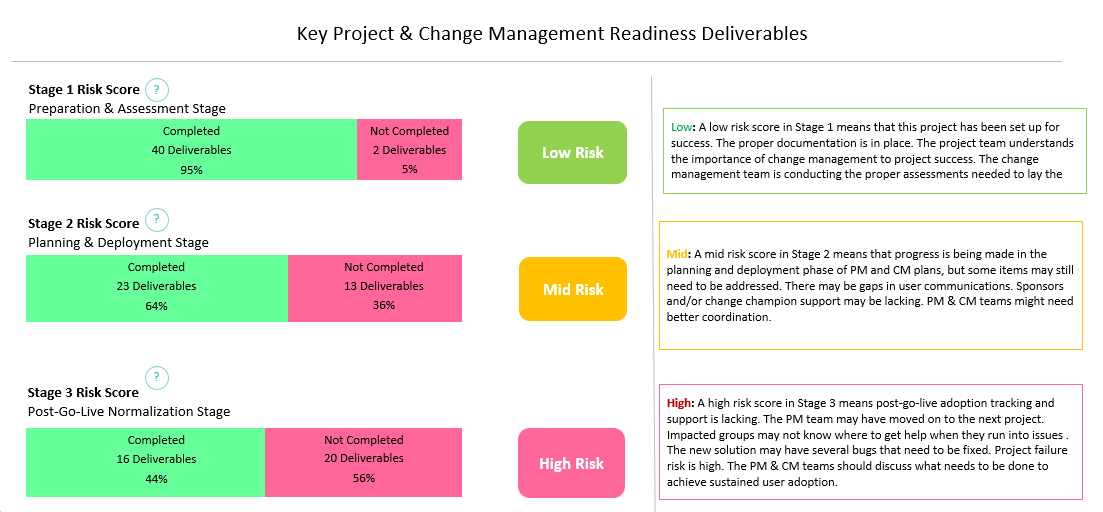
Integrating change management into the risk management process is essential for navigating transitions effectively. Here's a closer look at how these two critical elements work together:"
- Change management identifies potential disruptions and uncertainties during organizational shifts.
- It helps assess the impact of changes on operations and objectives.
- Enables proactive planning to mitigate potential risks and challenges.
- Ensures a smoother transition by preparing employees for upcoming changes.
- Enhances adaptability and resilience in the face of evolving business environments.
- Promotes an environment of ongoing enhancement and forward-thinking issue resolution.
Part 3: Importance of Regulatory Change Management
Regulatory Change Management holds significant importance in various industries due to several key reasons:
- Compliance Assurance: Ensures businesses adhere to constantly evolving regulatory requirements, reducing the risk of penalties or legal repercussions.
- Risk Mitigation: Identifies and addresses potential risks associated with non-compliance, safeguarding the company's reputation and financial stability.
- Adaptability to Market Dynamics: Allows organizations to swiftly respond to changes in the regulatory landscape, maintaining competitiveness and relevance.
- Operational Efficiency: Streamlines processes and workflows to align with new regulations, enhancing efficiency and reducing operational friction.
- Reputation Management: Demonstrates commitment to ethical business practices, bolstering trust among stakeholders, customers, and partners.
- Innovation Facilitation: Provides clarity on regulatory boundaries, enabling businesses to innovate within the confines of compliance.
Part 4: Common Change Management Risks
Recognizing and addressing these common change management risks is pivotal for a successful transition. Here are some significant challenges to overcome:
- Resistance to Change: Employees may resist adopting new practices or technologies.
- Communication Gaps: Insufficient or unclear communication can lead to confusion and resistance.
- Lack of Leadership Support: Without strong backing, change efforts can falter.
- Inadequate Training: Poor preparation can hinder employee adaptation.
- Unclear Goals: Lack of a clear vision can result in directionless change efforts.
- Role Ambiguity: Unclear roles can lead to confusion and inefficiencies.
- Cultural Neglect: Ignoring organizational culture can hinder change acceptance.
Part 5: Creating a Change Management Chart Using EdrawMax
Creating a Change Management Chart using EdrawMax is a strategic move towards seamless organizational transformation. This powerful tool offers an intuitive platform to visually represent the entire change process, from planning to execution. Its user-friendly interface simplifies complex concepts, ensuring clear communication across teams.
With a plethora of customizable templates and a rich library of symbols, EdrawMax empowers businesses to tailor their change management charts to specific needs. By leveraging this innovative solution, organizations can enhance transparency, foster collaboration, and ultimately, drive the success of their change initiatives.
Here are the steps to create a change management chart using EdrawMax:
Step1
Open the EdrawMax application on your computer. Switch to the “Template” section from the left menu pane. Browse through the available templates and select a Change Management Chart template that best suits your needs.
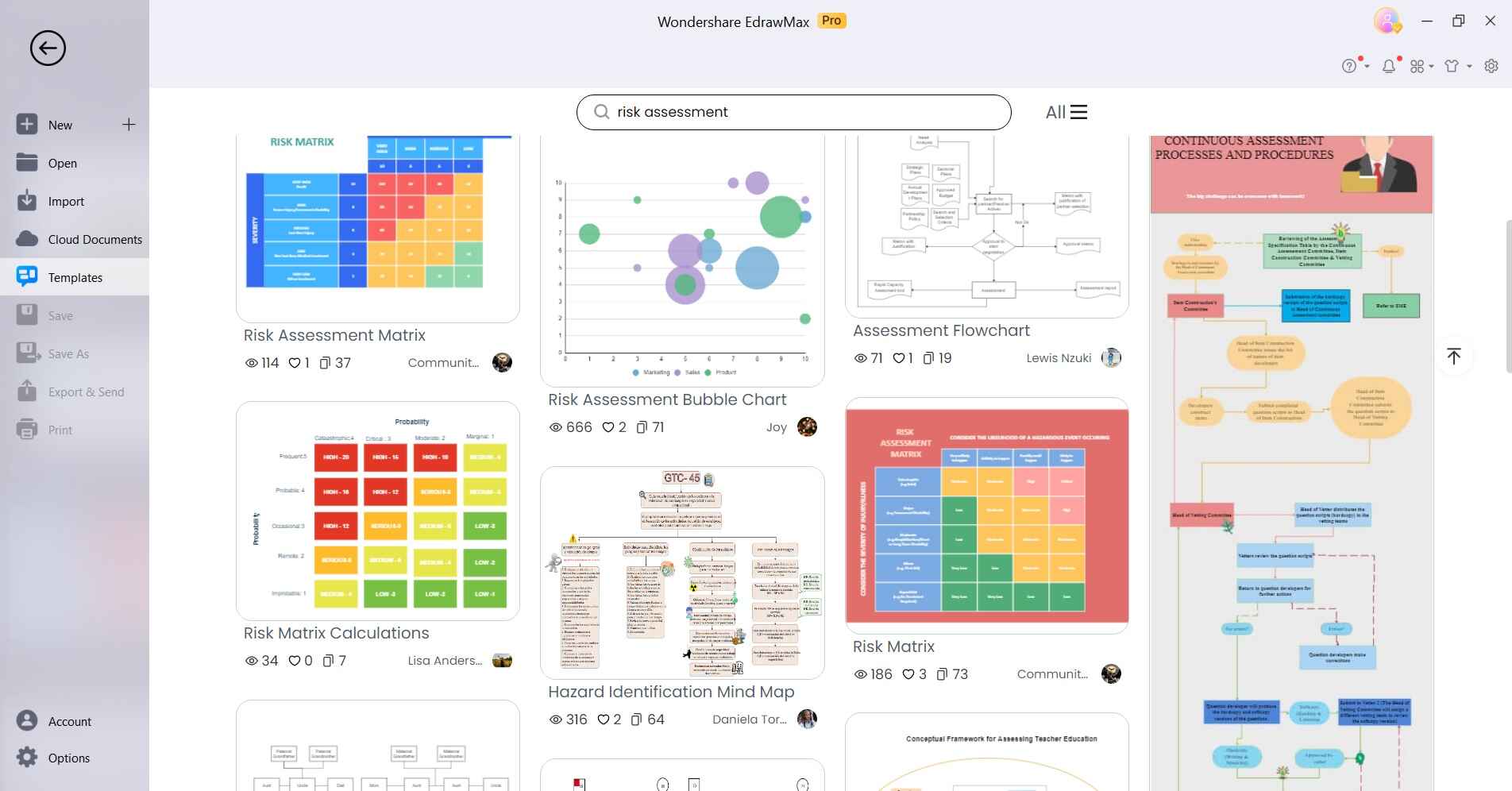
Step2
Add, edit, and arrange elements such as shapes, text boxes, and connectors to represent the stages and components of your change management process.
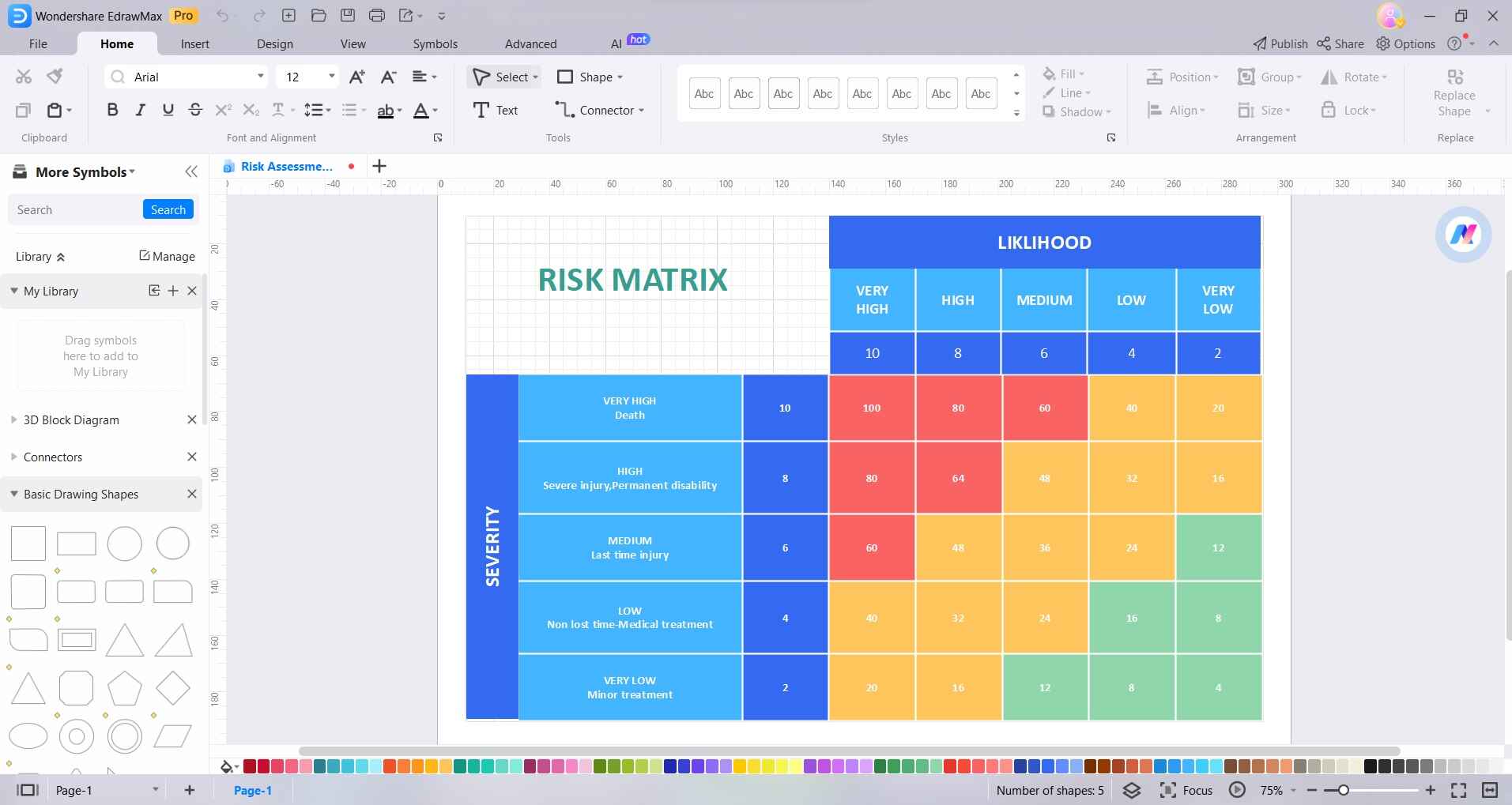
Step3
Use connectors to illustrate the flow and relationships between different stages or tasks in the change management process.
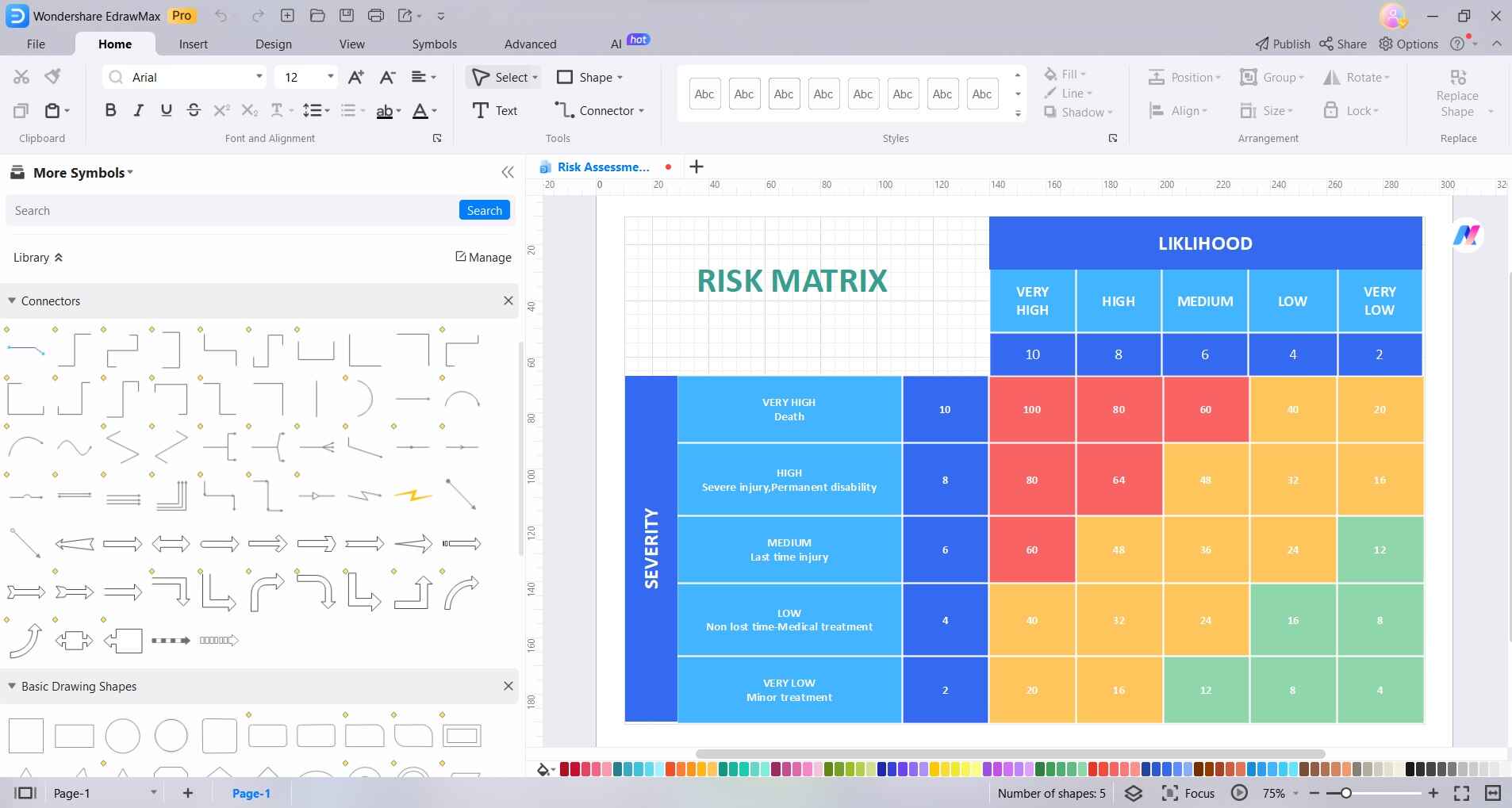
Step4
Choose colors, fonts, and styles that align with your organization's branding or the nature of the change initiative.

Step5
Double-check the chart for accuracy, coherence, and completeness. Make any necessary adjustments or refinements.
Step6
Head to File > Save once satisfied with the chart, save it in your preferred format (e.g., PNG, PDF, or EdrawMax file) for easy sharing and future reference.
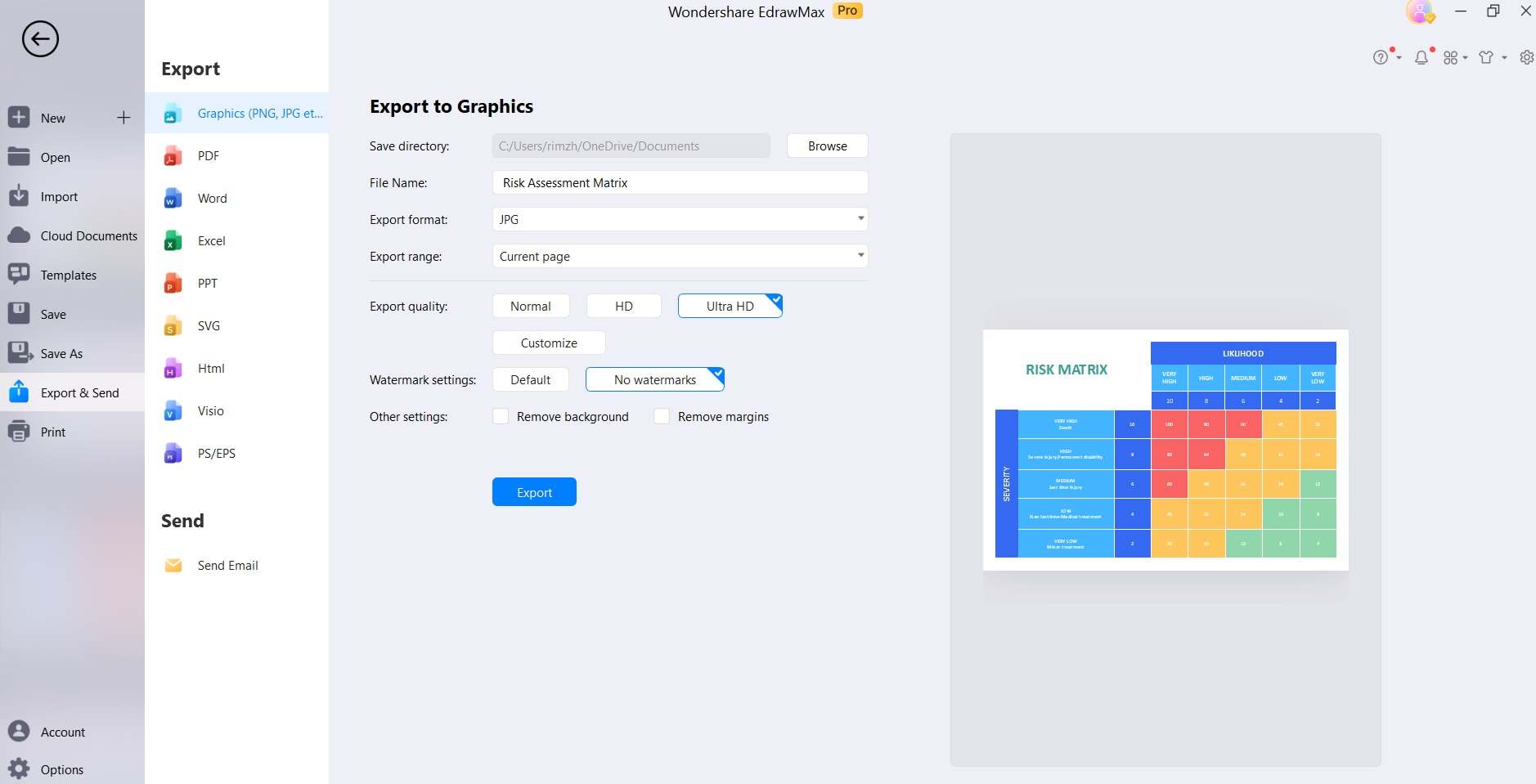
By following these steps, you can effectively utilize EdrawMax to create a comprehensive Change Management Chart that aids in visualizing and executing successful organizational transformations.
Part 6: Strategies for Mitigating Change Management Risks
Here are simple strategies to mitigate change management risks:
- Clear Communication: Share transparent messages about the change and its advantages.
- Engage Stakeholders: Involve key players early to gain their support.
- Provide Training: Equip employees with the skills and knowledge they need.
- Appoint Champions: Select advocates to guide others through the process.
- Monitor Progress: Keep track and adjust the strategy as needed for best results.
Conclusion
By keeping things simple with clear communication, stakeholder involvement, training, champions, and ongoing monitoring, businesses can navigate change effectively. These basic change management risk assessment strategies ensure everyone understands and embraces the transition, leading to a more resilient future with sustainable growth.




